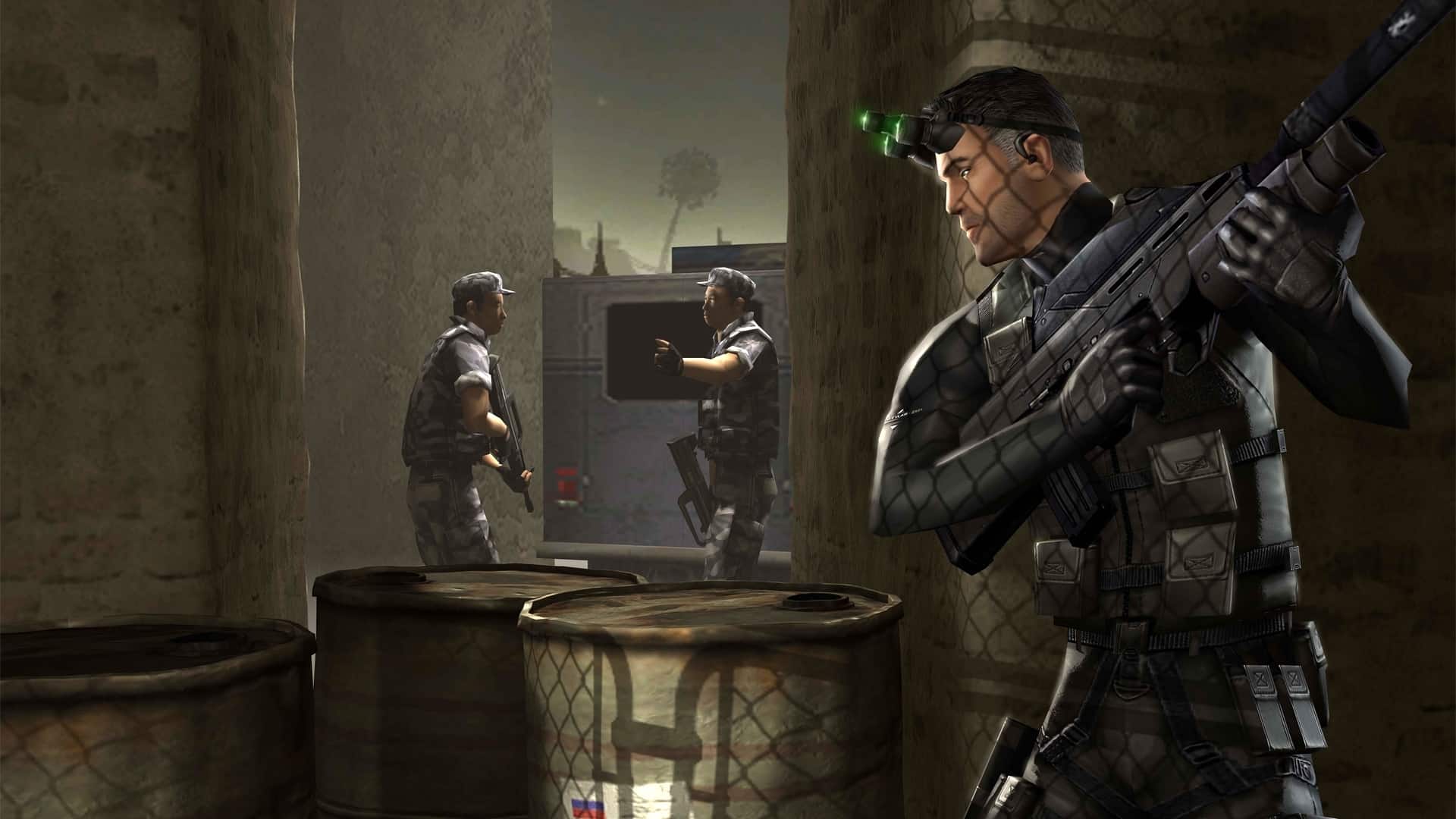In the world of gaming, there are titles that have been instrumental for new and emerging genres. Among them is Tom Clancy’s Splinter Cell, a series that has become synonymous with stealth action-adventure since its debut in 2002. Rooted in the espionage and tactical operations of Sam Fisher, a covert operative in a fictional NSA sub-division called the Third Echelon. The series has offered gamers intricate levels that are designed specifically to be completed in a stealthy fashion, featuring light and darkness as central elements of gameplay.
Tom Clancy’s Splinter Cell series has evolved throughout the years in terms of storytelling, gameplay mechanics, and technological advancements. Over its various installments, the series has navigated themes from information warfare to ethical dilemmas. Geopolitical tensions are a staple of the series. Initially focused on solo stealth missions, the franchise expanded its scope to include cooperative and competitive multiplayer modes and even an ever-expanding world of novels. The game series has featured seven different titles, the latest released in 2013. While the future of the series was in the dark for years, it seems now that a remake of the original is in the making.
Here we’ll take a look at all the games in the series in both chronological and release order, starting with the latter.
Tom Clancy’s Splinter Cell (2002)
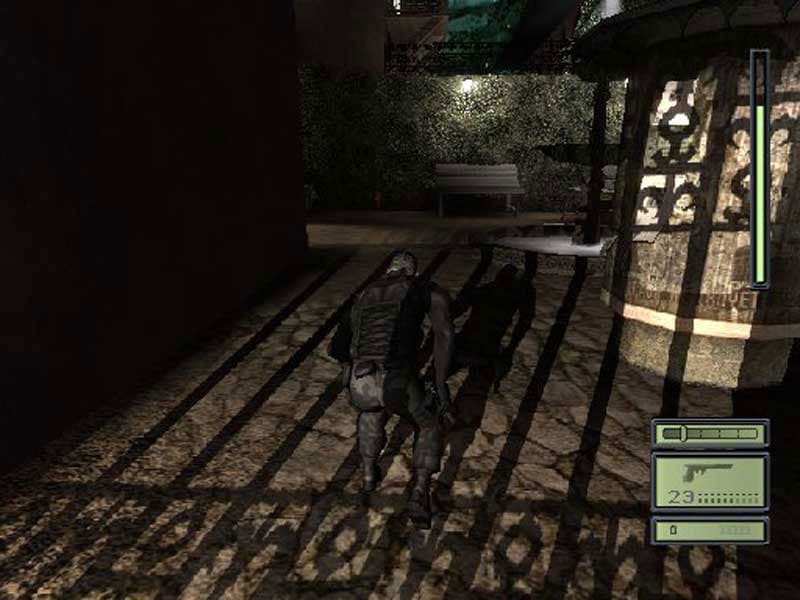
Ubisoft developed Tom Clancy’s Splinter Cell, with Microsoft Game Studios as the original publisher. The game launched first on the Xbox with releases on several other platforms following after. Drawing inspiration from the Metal Gear series, the game innovated on the new light-and-dark-based gameplay. The essence of the game is stealth, pushing the player to seek the cover of darkness. You get tools like night vision and thermal goggles to see in the dark and a light meter to estimate your visibility to enemies. You can even break lights to lower your chances of being seen.
In terms of weaponry, the game doesn’t give you much. While you get a suppressed FN Five-Seven sidearm for every mission, and sometimes an FN F2000 assault rifle, the ammo is limited. However, you also get less-lethal gadgets like sticky shockers and CS gas grenades. The game puts maneuverability up front with Fisher able to mantle onto ledges, hang from pipes, and perform acrobatics like the split jump. In the plot, Sam Fisher, a former U.S. Navy SEAL joins a new NSA division to investigate a coup in Georgia. He finds out about a sinister ethnic cleansing campaign and works to put an end to it.
Tom Clancy’s Splinter Cell: Pandora Tomorrow (2004)
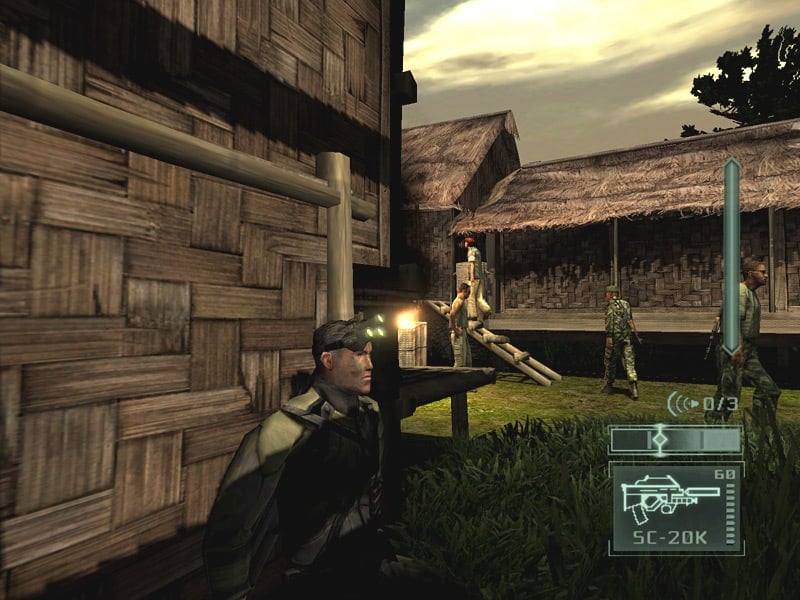
©A screenshot for Tom Clancy’s Splinter Cell: Pandora Tomorrow
Ubisoft is the studio behind the second title in the series, Pandora Tomorrow. This installment broke new ground by including multiplayer. Single-player wasn’t left behind though, and this time around the game’s AI adjusts based on your skill level. The story is a different sort of take from the original, focusing on biological threats as opposed to data-based crises. However, Fisher is still in the picture, and returns with new abilities.
The core gameplay remains much the same, but there are subtle enhancements. Health kits are no longer inventory items, and Fisher’s pistol gets a laser sight. This helps players know exactly where bullets will hit. Fisher can also perform moves like shooting while hanging upside down and whistling to attract enemies. However, some of these features were not seen in future titles. Pandora Tomorrow’s plot dives into East Timor’s struggle against Indonesian guerrilla militias. Fisher’s friend Douglas Shetland gets captured and the main protagonist has now personal gripes in addition to a possible biological catastrophe.
Tom Clancy’s Splinter Cell: Chaos Theory (2005)
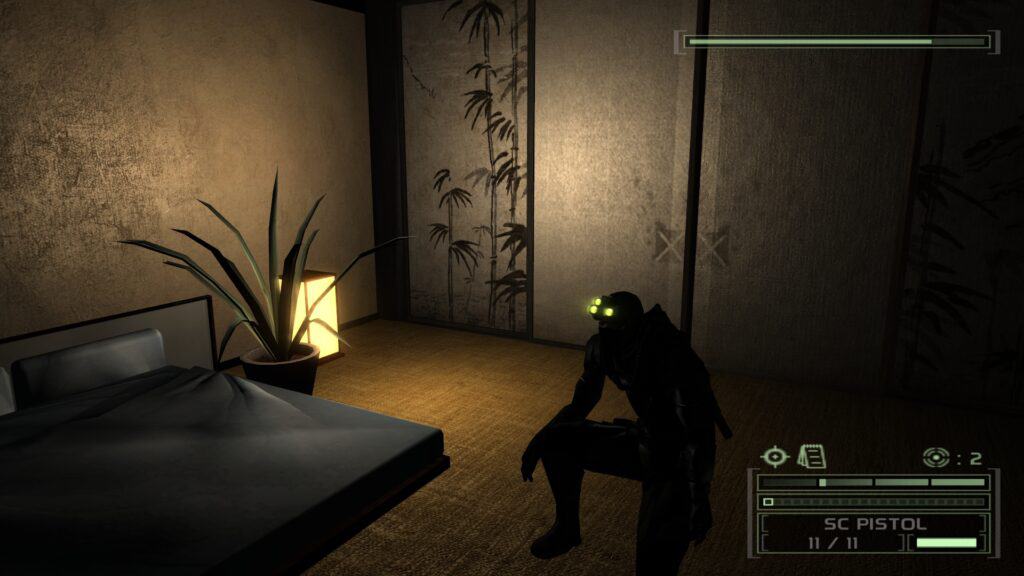
In Tom Clancy’s Splinter Cell: Chaos Theory, one of the main improvements was in terms of multiplayer experience. The game added a cooperative multiplayer mode, which allowed stealth adventures between friends. It also has an upgraded engine, more open maps, and new gameplay elements. Chaos Theory renewed some of the stealth aspects, too, introducing an aural monitor to measure how much noise Sam Fisher makes. Major steps were also made in terms of AI, which required the enemies to actually find the bodies before alarming others.
In addition to better AI, Chaos Theory also lets Sam use his combat knife in multiple scenarios. These include interrogating enemies, killing, and even sabotage. He also has improved close-quarters combat abilities. For example, he can grab enemies from ledges or choke them out while hanging upside down. While the game still places an emphasis on stealth, this iteration gave players a little more room to breathe and act, without the help of cheats.
Tom Clancy’s Splinter Cell: Essentials (2006)
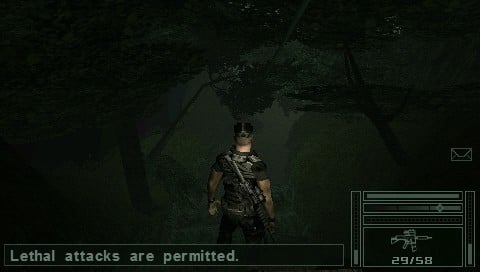
Tom Clancy’s Splinter Cell: Essentials took the series to the PSP, focusing on filling gaps in Sam Fisher’s backstory through a series of flashback missions. The game wasn’t quite as well received as the predecessors, primarily because of its control mechanics and less impressive multiplayer mode. In the story, Sam Fisher visits his daughter Sarah’s grave and ends up arrested and interrogated. The player experiences missions as flashbacks that Sam recalls during his time in custody.
Tom Clancy’s Splinter Cell: Double Agent (2006)
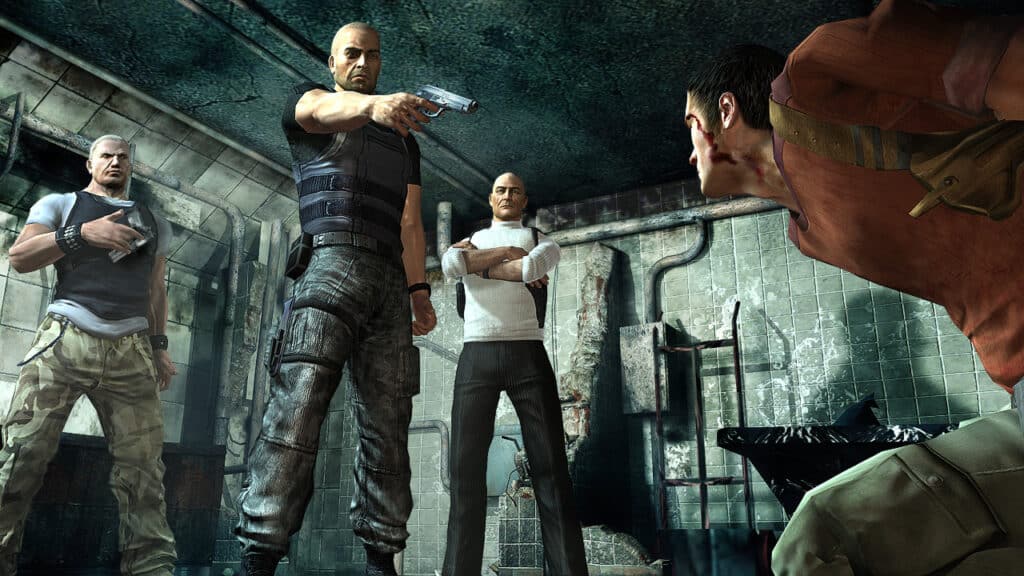
Tom Clancy’s Splinter Cell: Double Agent presents perhaps the most intense story in the series so far. This time, Sam has to infiltrate a terrorist organization, forcing him into morally grey areas he’s never been to before, as suggested by the subtitle of the game. The plot also diverges based on player decisions, adding multiple endings to the mix.
Sam deals with personal loss as he goes undercover, pushing his character into a new emotional territory. Double Agent introduces a trust system, challenging players to make choices that affect their alliances. Unlike other titles, this game has a hub area where Sam can undertake tasks between missions.
The game came in two distinct versions: one for next-gen consoles and one for older platforms. While the two versions share some similarities like background music and voice acting, they differ in terms of plot twists, level designs, and the overall gaming experience.
Tom Clancy’s Splinter Cell: Conviction (2010)
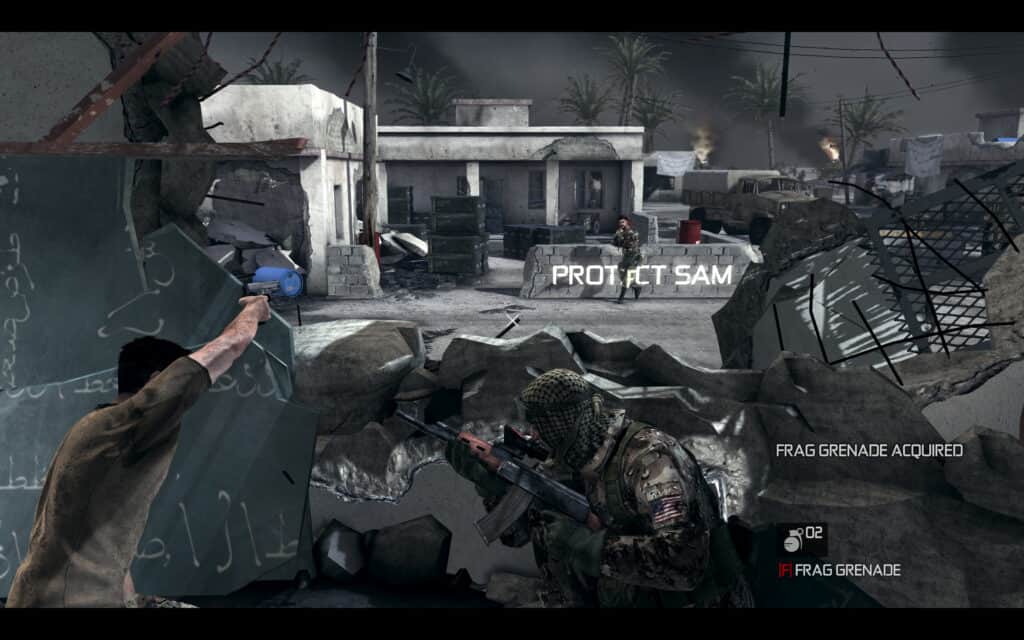
In Splinter Cell: Conviction, Sam Fisher returns to the field three years after Double Agent, but he’s not the same stealth agent anymore. Ubisoft ditches some traditional stealth elements like lock-picking and whistling to make room for new core mechanics. Instead, Sam can perform Mark and Execute, which lets you tag enemies or objects to eliminate them quickly. Another feature, Last Known Position, creates an outline of where enemies think you are. With the help of this, players can more easily find a way behind enemy lines.
The game also experimented with real-time interrogations and includes a projection feature that shows your objectives in the environmental view. There’s also co-op gameplay in the form of Prologue, which gives a ten-day backstory to the single-player campaign. All-in-all, the second last title for the series is a more accessible iteration of the iconic series, which made it perhaps more popular in mainstream gaming. It still kept the stealth gameplay that the series is known for, but also included convenient new features for newcomers.
Tom Clancy’s Splinter Cell: Blacklist (2013)
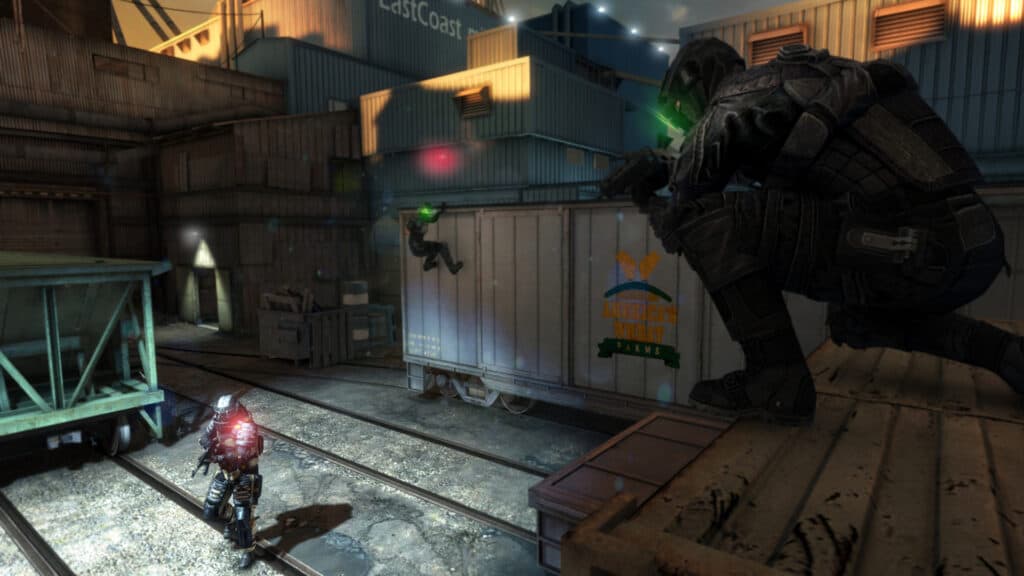
In Splinter Cell: Blacklist, Sam Fisher is now the leader of the Fourth Echelon, a top-secret unit answering only to the President of the United States. Fisher now also has a new voice actor, Eric Johnson replacing Michael Ironside. The task at hand is to stop a series of terrorist attacks known as the Blacklist. This installment brings back elements from both Chaos Theory and Conviction, offering the best of both worlds. Mark and Execute feature makes a comeback, but Fisher now has a new Karambit knife for quick takedowns.
Unlike earlier games that leaned more towards either action or stealth, Blacklist offers perhaps a more balanced gameplay. Whether you want to go in guns blazing or take a more subdued approach, the game supports both styles. It even adds the option to rotate the camera and scale ledges, increasing your tactical options. The Tri-Rotor drone is a new addition, a nifty gadget for scouting, distracting, or even zapping enemies. Whether you’re a die-hard Splinter Cell fan or new to the series, Blacklist offered a blend of action and stealth that’s hard to resist.
Chronological Order
- Tom Clancy’s Splinter Cell (2004)
- Tom Clancy’s Splinter Cell: Pandora Tomorrow (2006)
- Tom Clancy’s Splinter Cell: Chaos Theory (2007)
- Tom Clancy’s Splinter Cell: Double Agent (2007/2008)
- Tom Clancy’s Splinter Cell: Essentials (2009)
- Tom Clancy’s Splinter Cell: Conviction (2010)
- Tom Clancy’s Splinter Cell: Blacklist
The image featured at the top of this post is ©IGDB.
